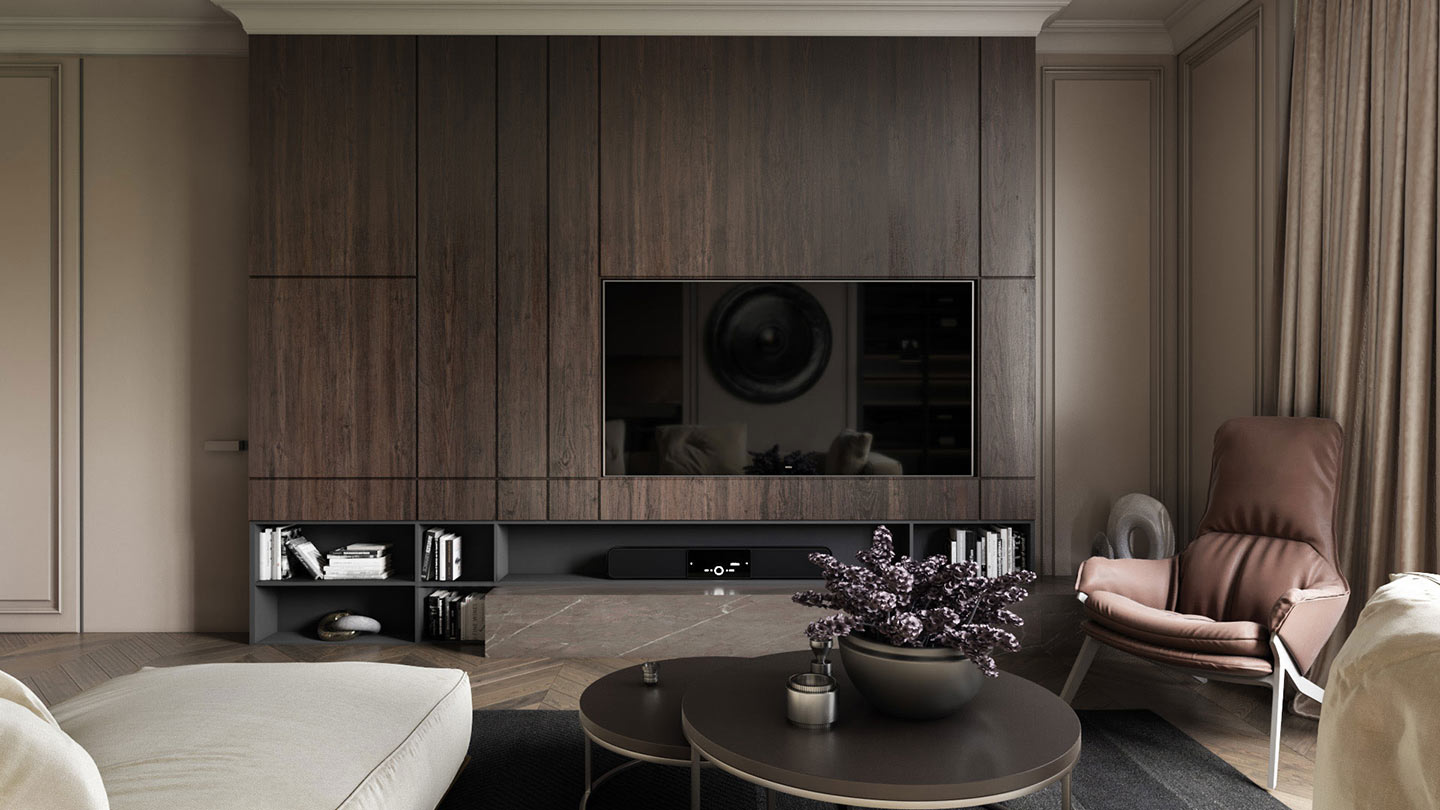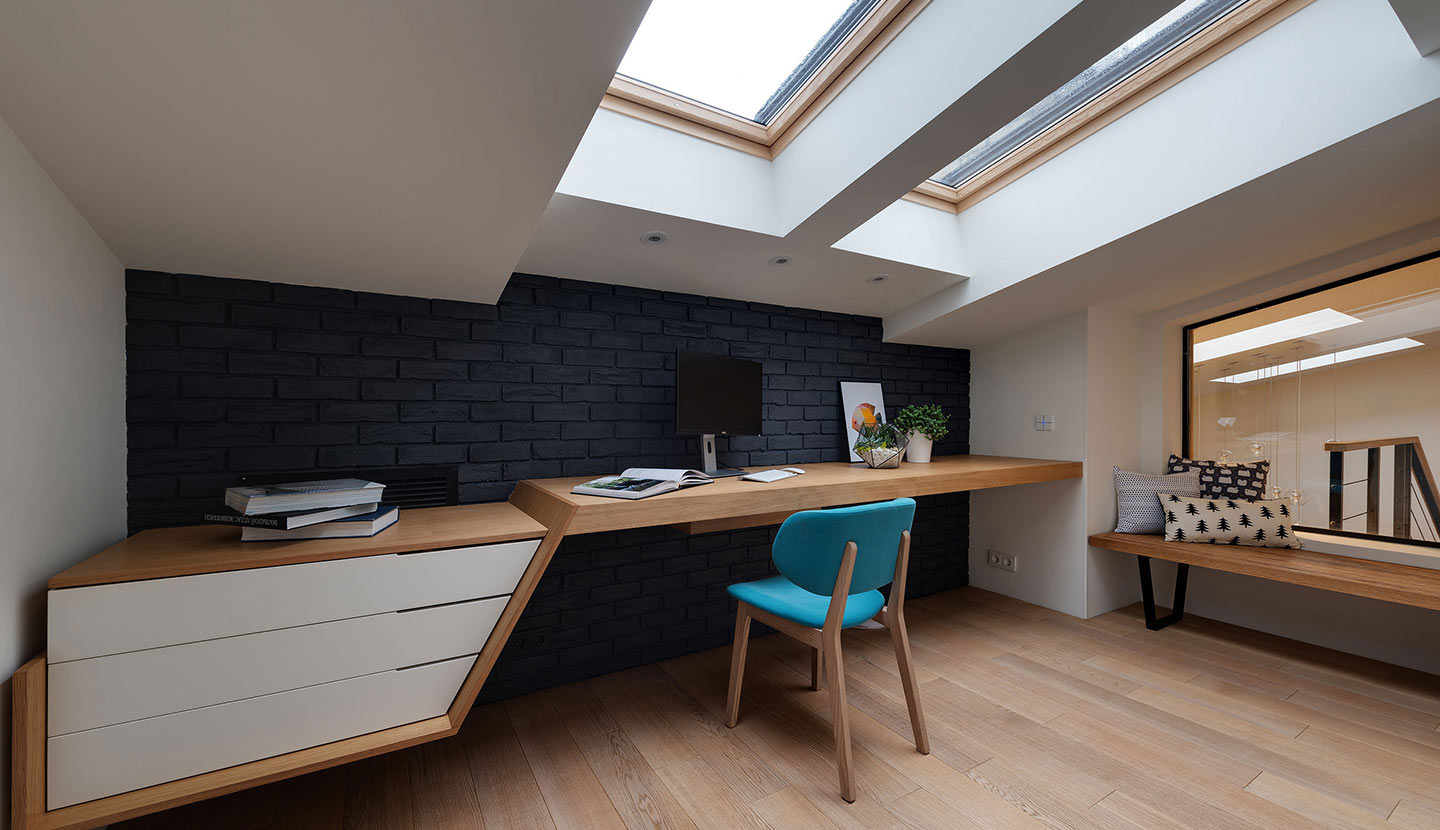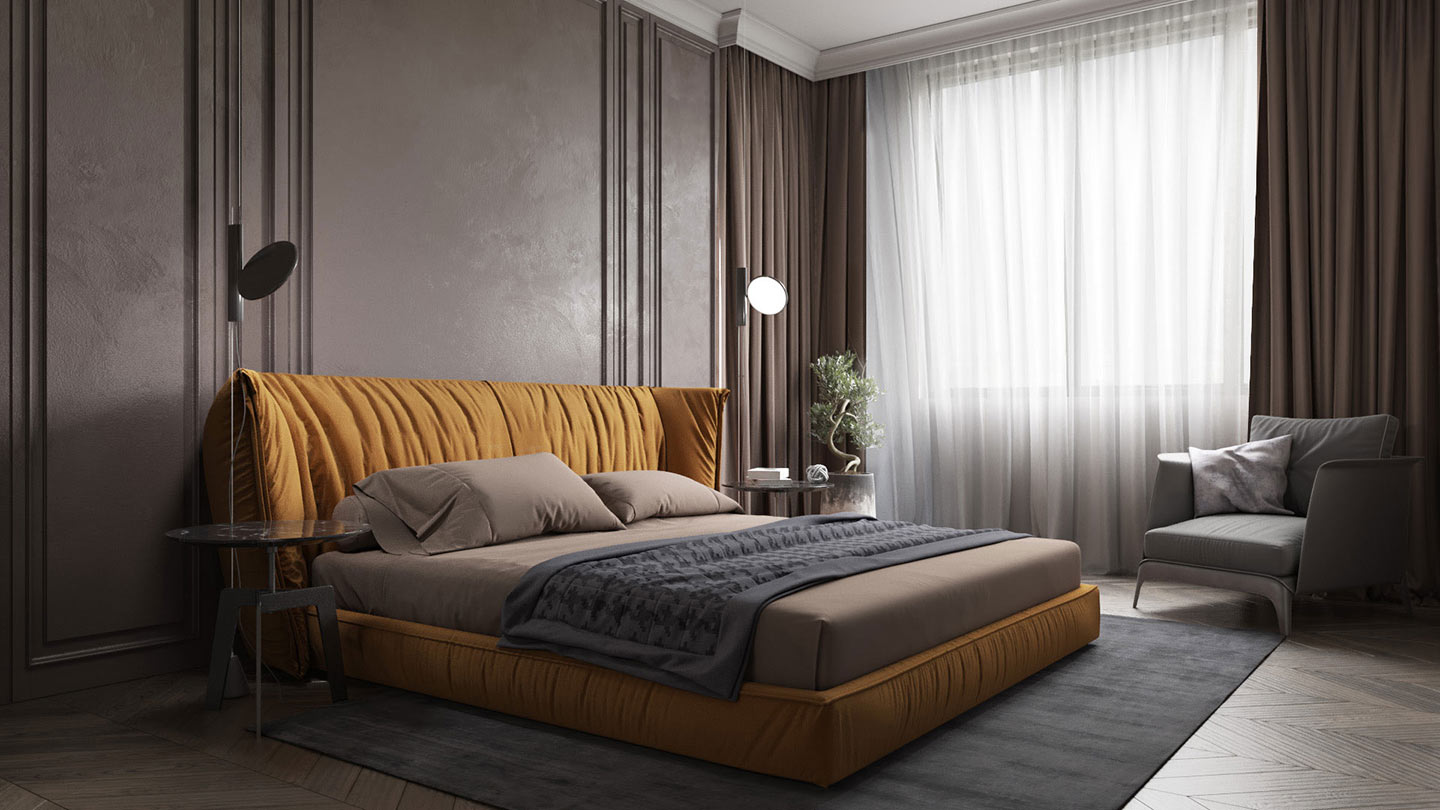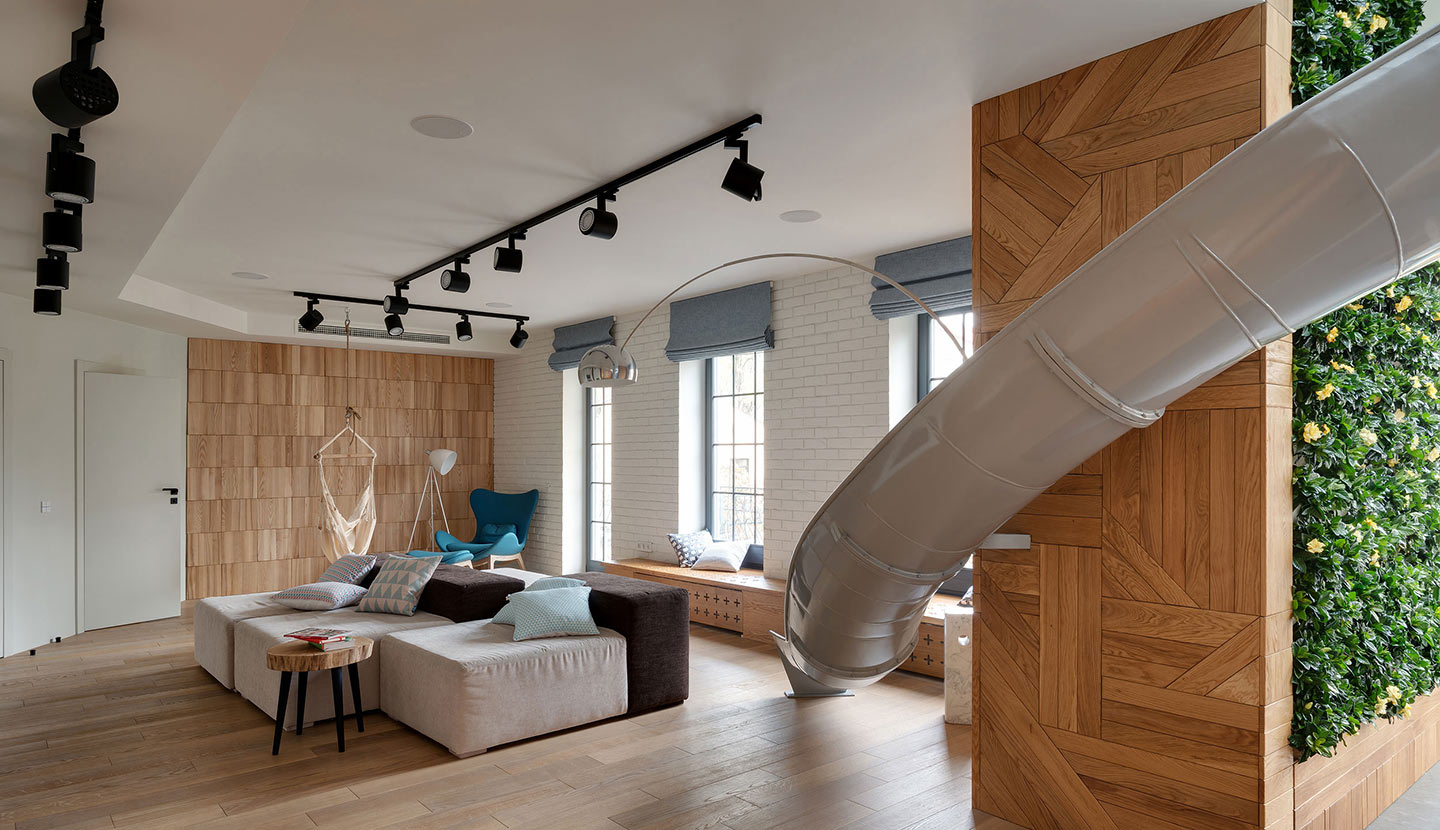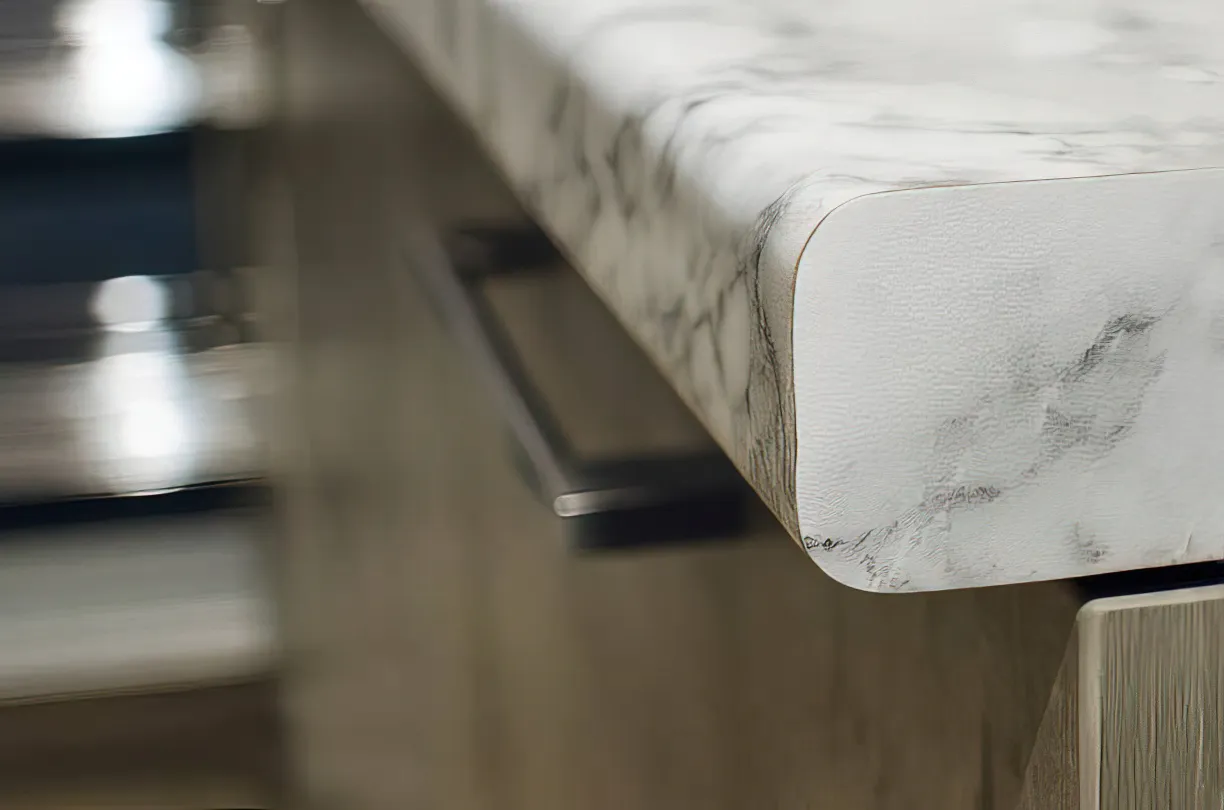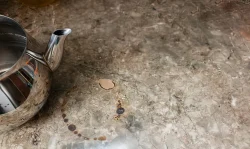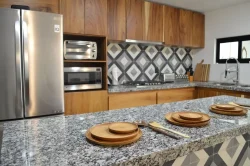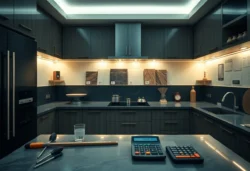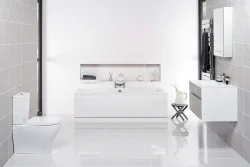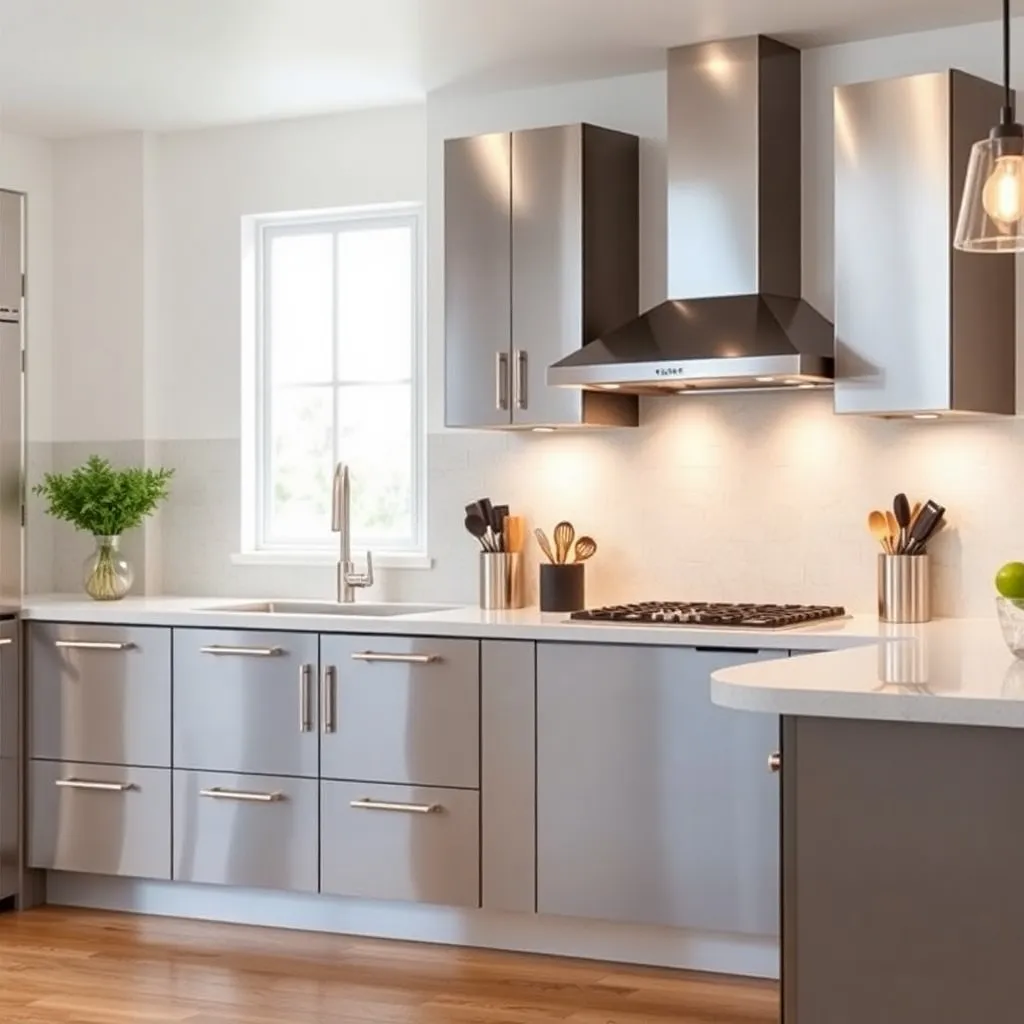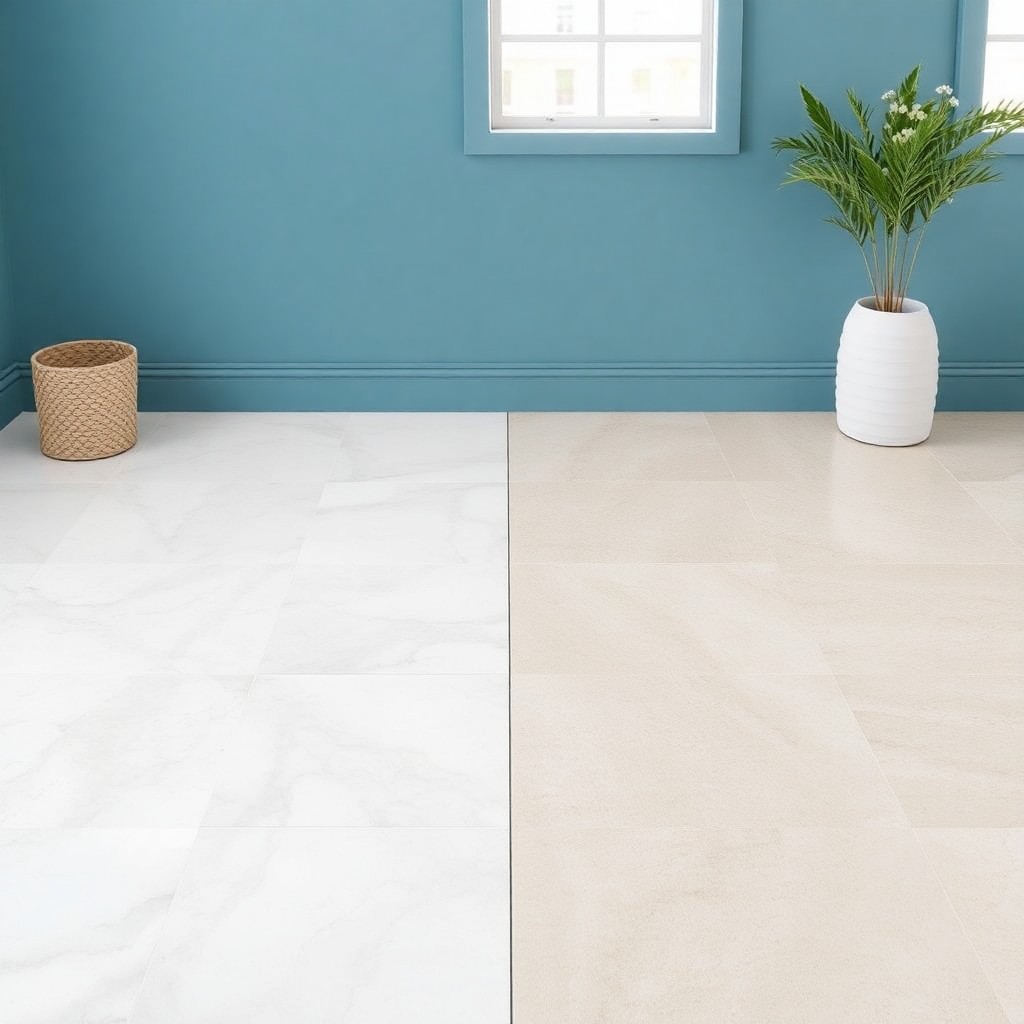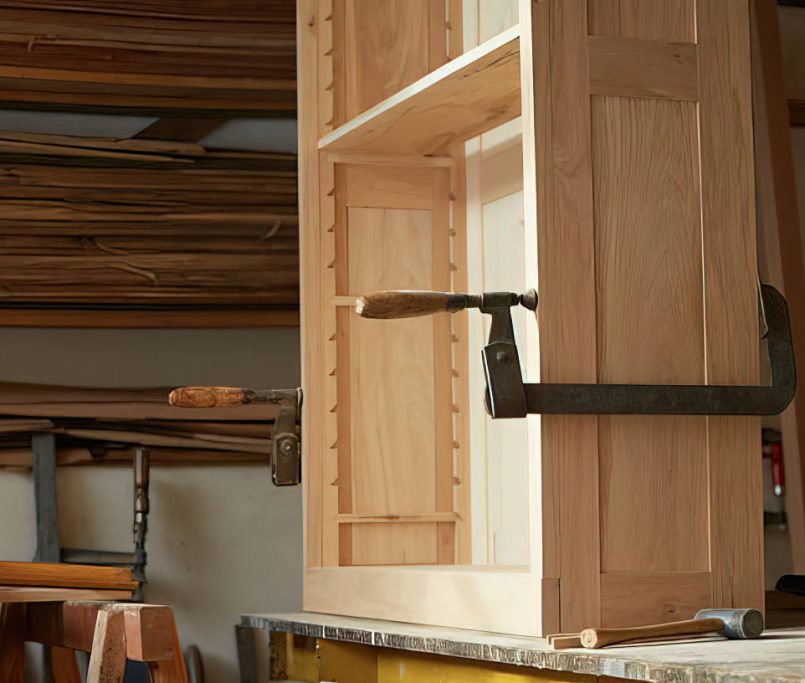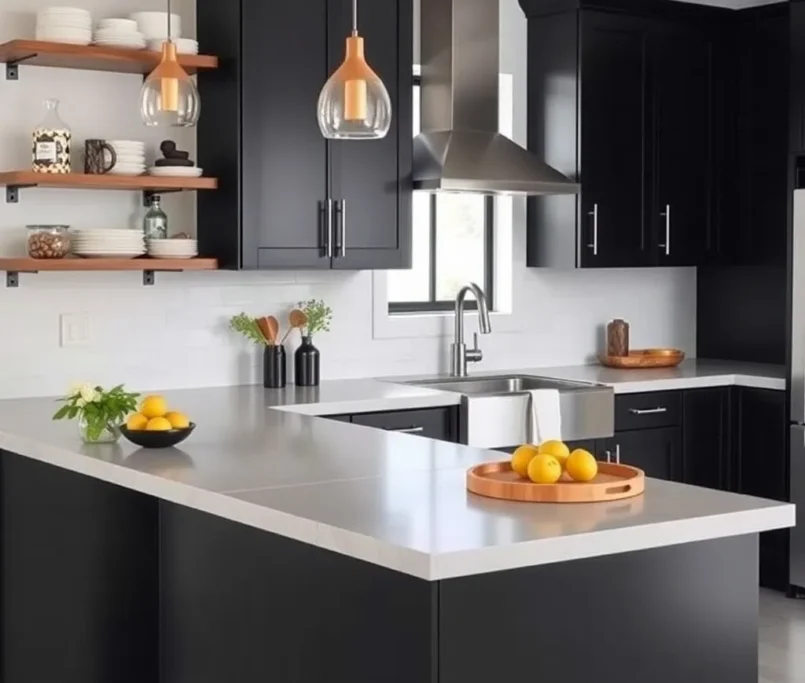One of the most important elements, when you choose a good countertop for your vanity bathroom and kitchen cabinets, is the edge. The edge of your countertop will have an impact on the overall look and feel of your space, and there are many different types of edges to choose from. In this article, we’re going to explore five of the most popular countertop edge types so you can make an informed decision when choosing your countertop.
=> Related Articles: What Kitchen Layouts: L-Shape, U-Shape, G-Shape, Galley, and more
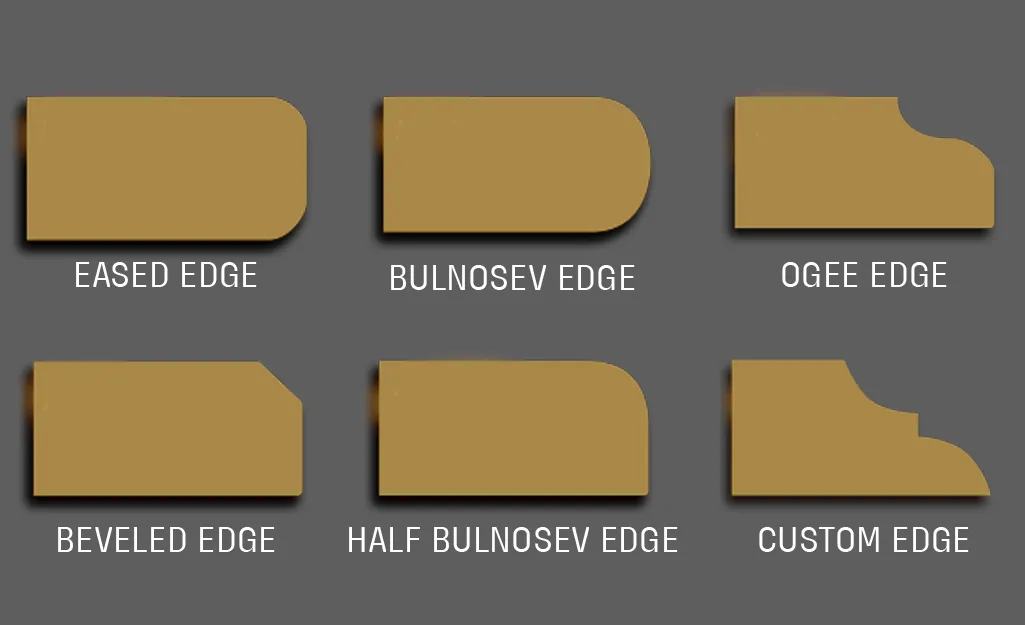
Full Bullnose Edge
Full bullnose edge countertops (known as Bullnose Edge) are an attractive style of countertop edge that provides a rounded profile, giving the surface a softer, traditional, and more elegant look. This sort of edge style is a fantastic choice for families with small children, as it eliminates the risk of sharp edges and possible cuts. However, the curved shape of the edge can present a challenge when it comes to cleaning up spills since liquids can be easily channeled underneath the edge and cause damage or staining if not addressed promptly. Additionally, it can be difficult to get crumbs off this edge profile, as they tend to slide beneath the countertop due to the eased angle.
=> Read more: Bullnose: The Most Countertop Edge for Bathroom
For weighing the benefits and drawbacks of full bullnose edge countertops, it is critical to evaluate your needs and tastes. While this type of countertop edge is visually pleasing and safe for little children, it does necessitate extra care while cleaning. If you want a countertop edge that is both beautiful and easy to clean, go with a half-bullnose or straight edge.
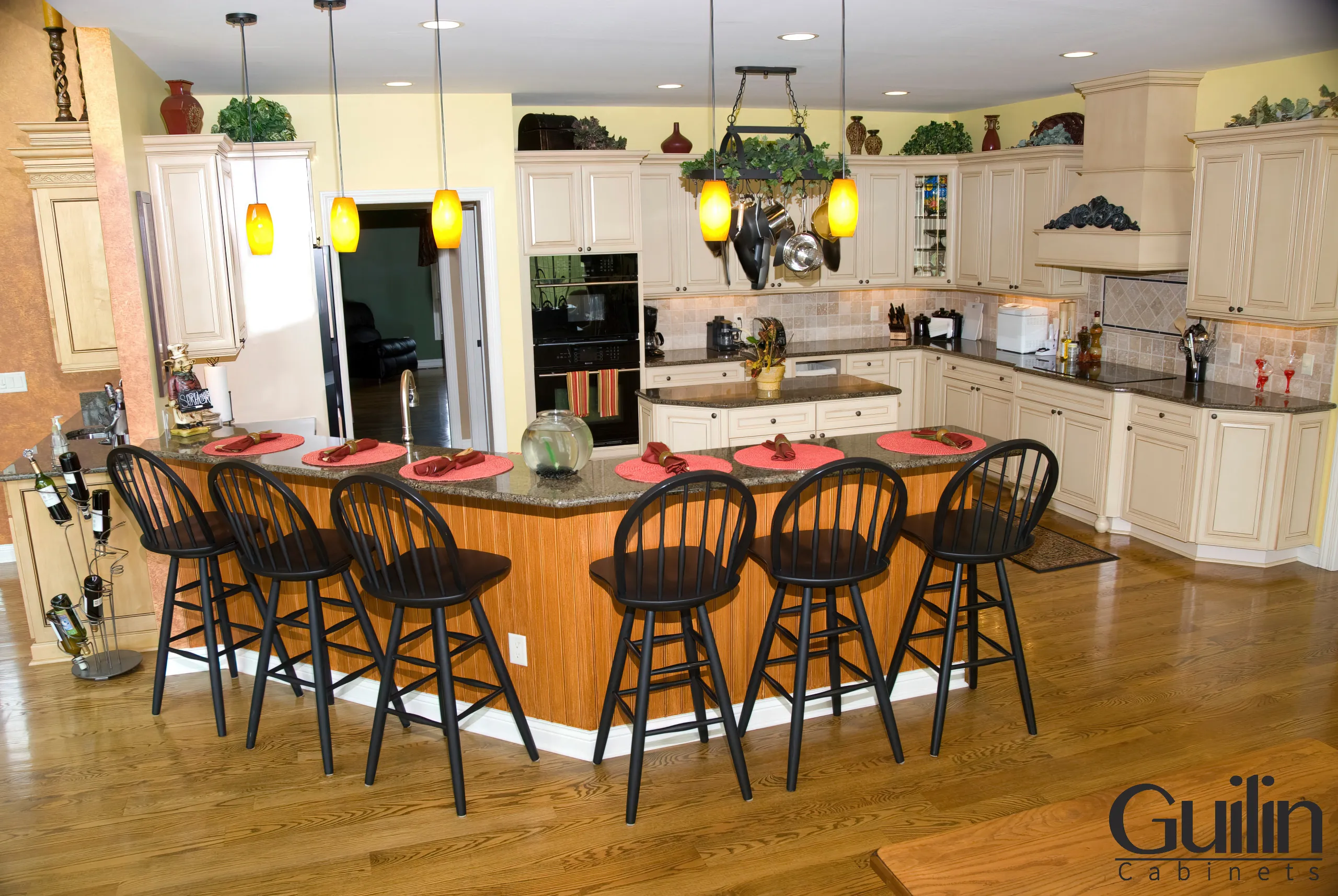
Pros and Cons of Bullnose Edges
| Pros | Cons |
| Elegant and timeless look | Can show wear and tear more easily |
| Safe for families with small children | May be considered less trendy than other edge styles |
| Easy to clean and maintain | Not as dramatic or eye-catching as some other options |
Ogee Edges
Do you want to make your cooking area a little more luxurious? Ogee edge countertops are an excellent technique to accomplish this. A curved, S-shaped edge that incorporates two curved sections along the top and bottom of the countertop is known as an ogee edge. The upper curve is convex, while the lower curve is concave, resulting in a complex shape that adds visual appeal to any kitchen. Because of the additional skill and work required, installing an ogee edge countertop might be more expensive than other designs.
=> Related Article: How to Choose Good Bathroom Vanity Countertop – Guilin Cabinet
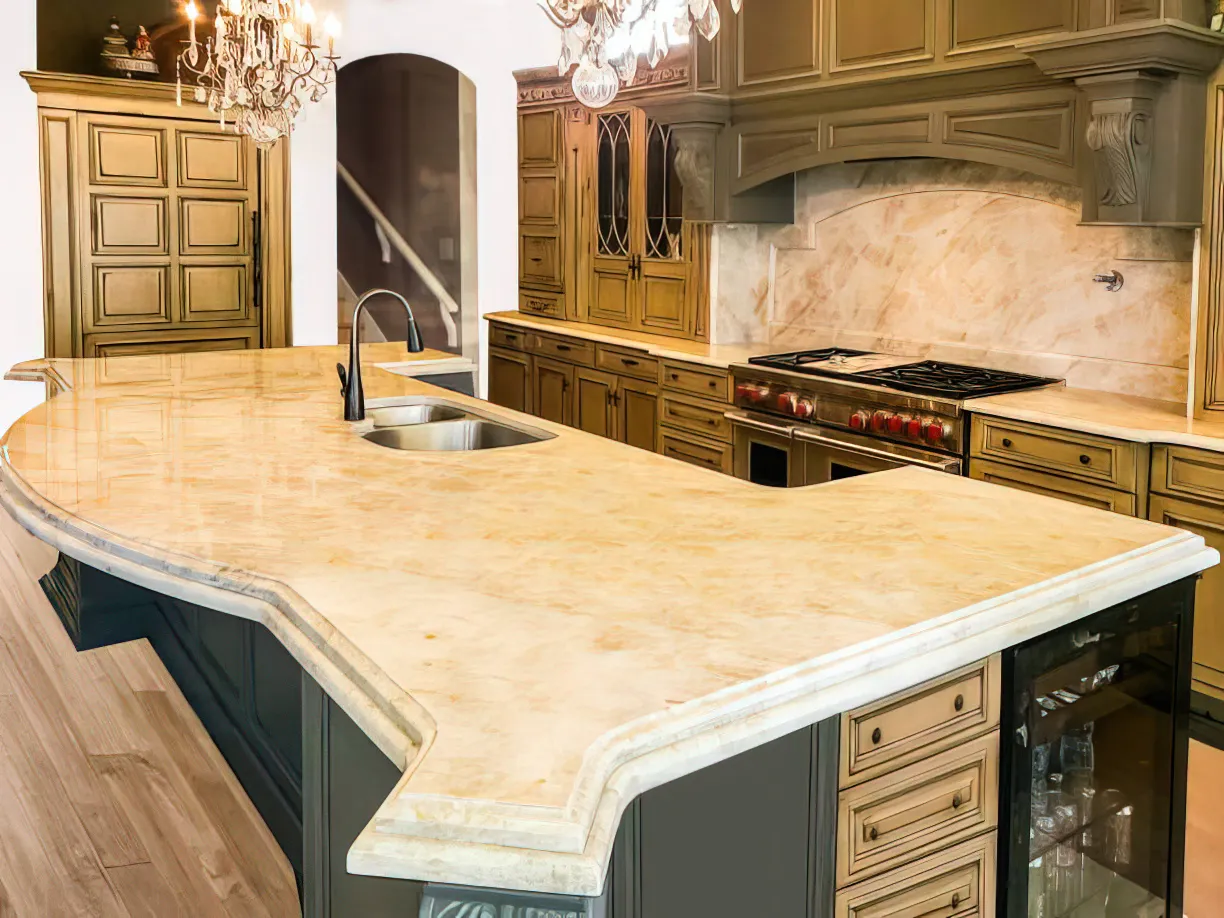
=> Related Article: Ogee Edges – The Popular Edge For Natural Stone Tops
Furthermore, because of its complicated shape, it can be difficult to clean and preserve. If you want to make a statement with your kitchen, limit the ogee edge countertops to the kitchen island or other highly visible spots, as having them all over the kitchen might be overwhelming for some people. For these reasons, you need to weigh carefully the pros and cons of an ogee edge countertop before making a choice.
Beveled Edges
Do You want to give your kitchen an elegant, modern touch? The beveled edge countertops are an excellent option for you. Beveled edges feature a 45-degree cut across one end of each piece, which is then sanded down to create a smooth, sharply-defined edge. This gives your countertop a sophisticated look that will instantly elevate your kitchen space.
=> Read more: List Of Kitchen Styles For Your Home Kitchen Remodel Ideas
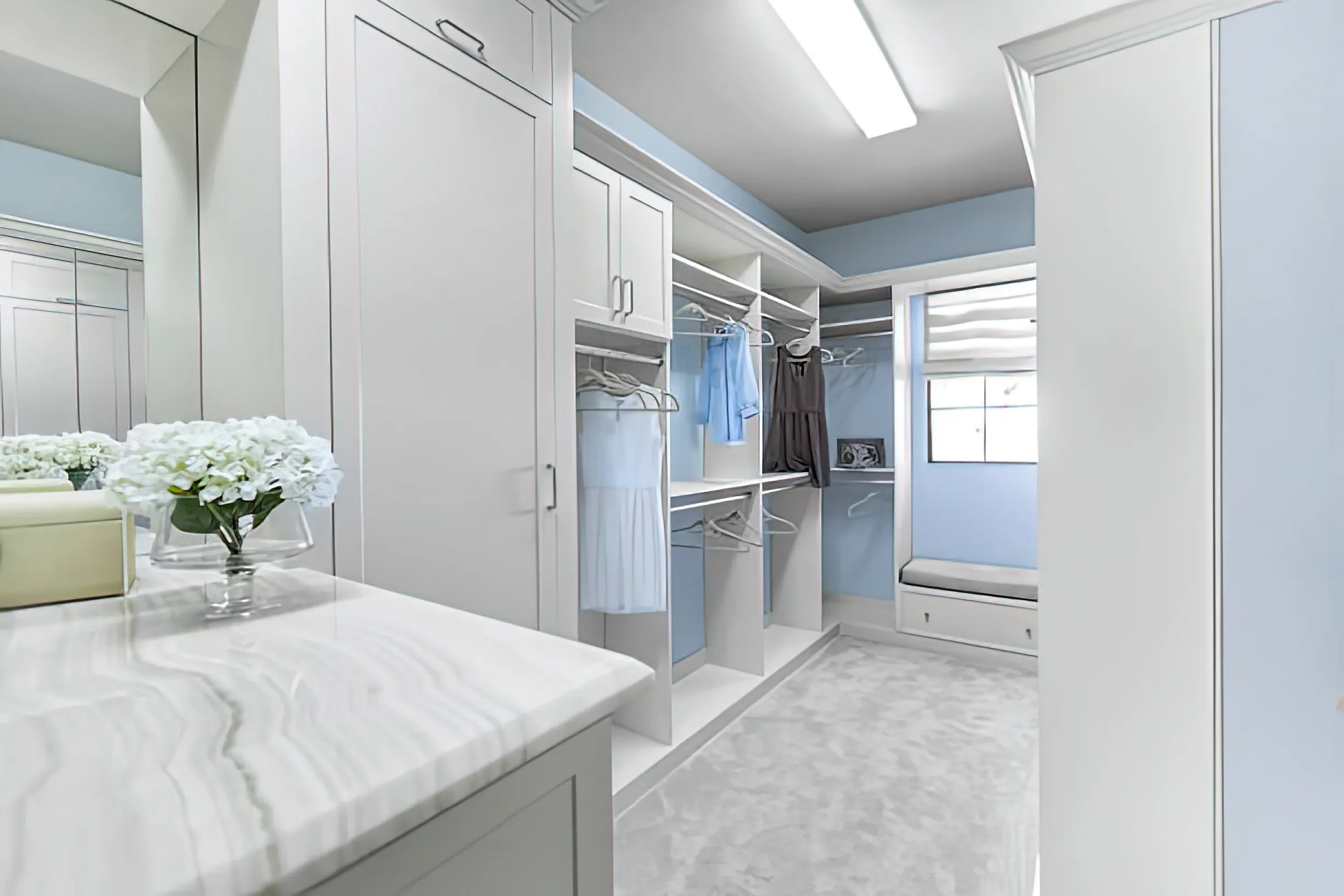
Not only do beveled edge countertops look great, but they also offer a number of practical benefits. Spills go straight onto the floor without seeping into your cabinets, making them ideal for busy households. Additionally, these edges are relatively simple to keep clean and don’t add a great deal to the final cost. However, it’s worth bearing in mind that beveled edges may not be the best choice for households with young children. Due to their sharp profile, these edges can potentially be dangerous if they’re not handled with care.
Half Bullnose Edge
The Half Bullnose edge (known as Demi Bullnose) is a great choice for those who want to add a modern and simple look to kitchen and bathroom countertops. This edge features a gently rounded edge that slopes down to a vertical line straight to the floor. Not only does this design offer an easy-to-clean surface, but it also prevents water from pooling and makes it easy to wipe up liquid spills. It is important to note, however, that the sharp lower edge can be a safety hazard for children and may not be ideal for a more luxurious or high-end look.

Pros & Benefits of Half Bullnose Edge Countertop Edge
- Safety: Are you looking for a safe option for your home? Half Bullnose Edge countertops are a great choice. The rounded top edge on this style of countertop creates a comfortable and visually pleasing look. Not only does the rounded edge help to soften the look of your countertop, but it also provides a safer surface for you and your family. With its smooth, rounded design, the half-bullnose edge countertop helps to reduce the risk of injury from sharp edges or corners.
- Easy to Clean: This type of countertop edge has a rounded shape, making it easy to clean and preventing water spills from traveling over the edge. Not only does this provide a safer environment for cooking and cleaning, but it also adds a touch of sophistication to your space.
- Cheaper than Full Bullnose Edge: Half bullnose edge looks just like a full bullnose edge, but costs significantly less!
Cons of Half Bullnose Edge Countertop Edge
- Simple look: The Half Bullnose Edge is a popular choice for countertops, offering a smooth finish and a modern look. While it has become a mainstream option, it is not necessarily a luxurious pick.
- Vulnerability to chipping: Half bullnose edges are prone to chipping, especially on the corners. This is because the edge is rounded and not sharp enough to withstand sharp impacts or heavy objects dropping on them. As a result, the edges might require frequent touch-ups, and in some cases, may need to be completely replaced.
- Uncomfortable for some tasks: Half bullnose countertops are great for looks, but the curved edge isn’t convenient for all tasks, especially for ones that require a flat surface. For example, rolling out dough, cutting vegetables, or even placing heavy appliances can be challenging due to the rounded edge.
Square Edge
For a sleek, minimalist look for your countertops, then you should consider beveled edge countertops. Featuring sharp 90-degree angles, these countertops create fine, clean lines that are perfect for any room. Beveled edge countertops are also an affordable option, making them an ideal choice for those on a budget. Plus, as the edges of the countertops are thicker, this leaves more space on either side of the counter. However, beveled edge countertops may be too plain or minimalist for some, and, due to their sharpness, they’re more prone to chipping than other edge profiles, such as eased and round edges. If you’re looking for a stylish, yet affordable countertop option, beveled edge countertops are a great choice.

Pros of Full Square Edge Countertops:
- Aesthetically appealing: Square edge countertops have a straight, uniform edge, which creates a modern look and provides a clean finish. With no curves or bevels, square edges give cabinetry and kitchen designs a streamlined and contemporary appearance.
- Easy to maintain: Cleaning square-edge countertops is relatively comfortable compared to their counterparts with more decorative edges. There are no nooks and crannies to collect crumbs, dirt, or grime. As such, they are easy to clean and maintain.
- Perfect for modern designs: Square edge countertops complement modern designs by offering sleek, straight lines that match up perfectly with contemporary cabinetry, giving a modern style that is both stunning and unique.
- Cost-effective: One primary reason many homeowners choose square-edge countertops over other edging styles is that they are often less expensive. Since fabricators don’t put more work into creating the edges, they’re generally less expensive to manufacture and install.
- No dirt-catching crevices: Square edges don’t harbor bacteria or dirt that other rounded edges do. Therefore, there is no need to worry about dirt-catching crevices, which can accumulate dirt and bacteria, making cleaning more challenging.
Cons of Square Edge Countertops:
- Sharp corners: One of the biggest disadvantages of square-edge countertops is their sharp corners. Unlike rounded edges or bevel edges, the sharp corners of a square edge can be hazardous, particularly in households with young children. The edges can cause injury if someone accidentally bumps into them.
- Prone to chipping: Square edge countertops are more susceptible to chipping than other countertop edge styles. The reason for this is that the sharp corners of square-edge countertops are more exposed, and thus more vulnerable to damage. Accidentally knocking or dropping heavy utensils or dishes can often cause chipping.
Conclusion:
Choosing the right edge profile for your kitchen countertop is a crucial step in creating the perfect look for your kitchen. There are a variety of options available, from a classic straight edge to more modern and decorative designs. No matter which edge profile you choose, it is important to ensure that it will look good and suit your kitchen’s overall design. if you have more Questions? Please Contact us – Guilin Cabinets for quartz, granite, limestone, sandstone, and other kitchen countertops.
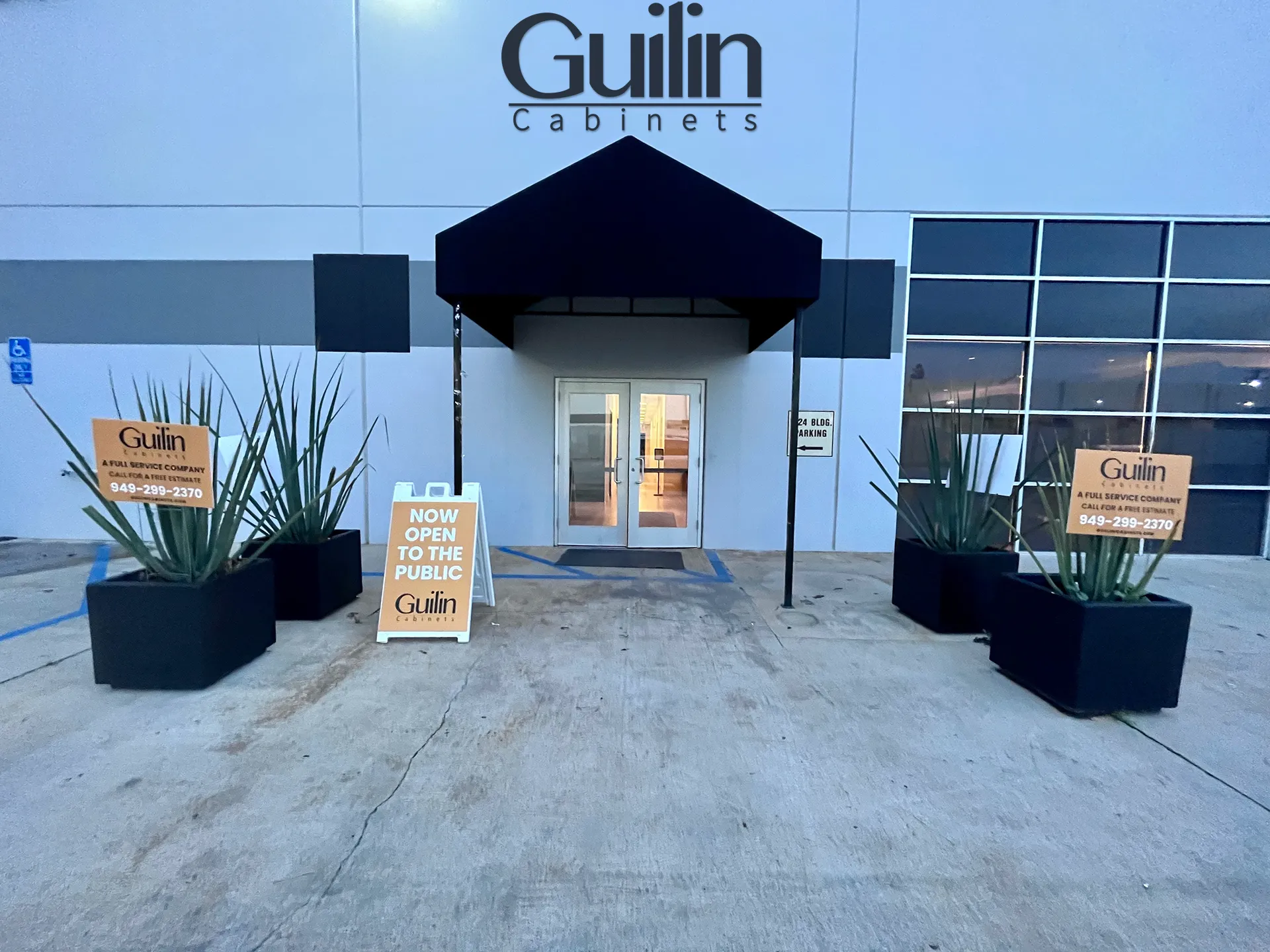
FAQs About Common Styles Of Countertop Edges
In short, What are countertop edges?
Countertop edges refer to the edges of a kitchen or bathroom countertop which can be finished in a variety of ways to achieve different looks and styles. It is an important aspect of any countertop as it can help to protect the countertop from damage and give it a finished look.
Why are the different styles of countertop edges important?
There are a variety of reasons why the style of countertop edge is important. Firstly, it can help to protect the countertop from damage, for example, by creating a slightly rounded edge to prevent chips and cracks from occurring. Secondly, it can help to define the style of the kitchen or bathroom, for example, if you have a traditional or modern style in the room. Finally, it can be a personal preference and can simply add to the aesthetic appeal of the room.
What are the five different common styles of countertop edges?
The five most common styles of countertop edges are the eased edge, the bullnose edge, the beveled edge, and the ogee edge. Each of these styles offers a different look and can be customized to suit your individual preferences and the style of the room.
Can countertop edges be customized?
Yes, most countertop manufacturers offer customization options for their edges. This can include options such as size, curve, and finish. Choosing the right style of countertop edge is important as it can impact the overall look and feel of the room. It is important to consider the style of the room, the durability and practicality of the edge, and your personal taste and preferences.
Can I change the style of my countertop edge?
Yes, it is possible to change the style of your countertop edge. This may involve hiring a contractor to make the modifications or purchasing a new countertop entirely. It is important to consider the cost and impact on the overall design of the room before making any changes.
How do I choose the right countertop edge for my space?
The perfect countertop edge is dependent on a number of factors. First, take stock of the room’s present design to ensure the edge will go well with it. Second, consider your budget; various edge styles may cost varying amounts. Some edges could be more prone to collecting dirt than others, so keep that in mind when you choose. Finally, for the sake of your children’s comfort and safety, particularly if they are young, make sure to use edges that are smooth and child-friendly. With these considerations in mind, you can safely select a countertop edge that not only satisfies your utilitarian demands but also enhances the aesthetics of your room.


